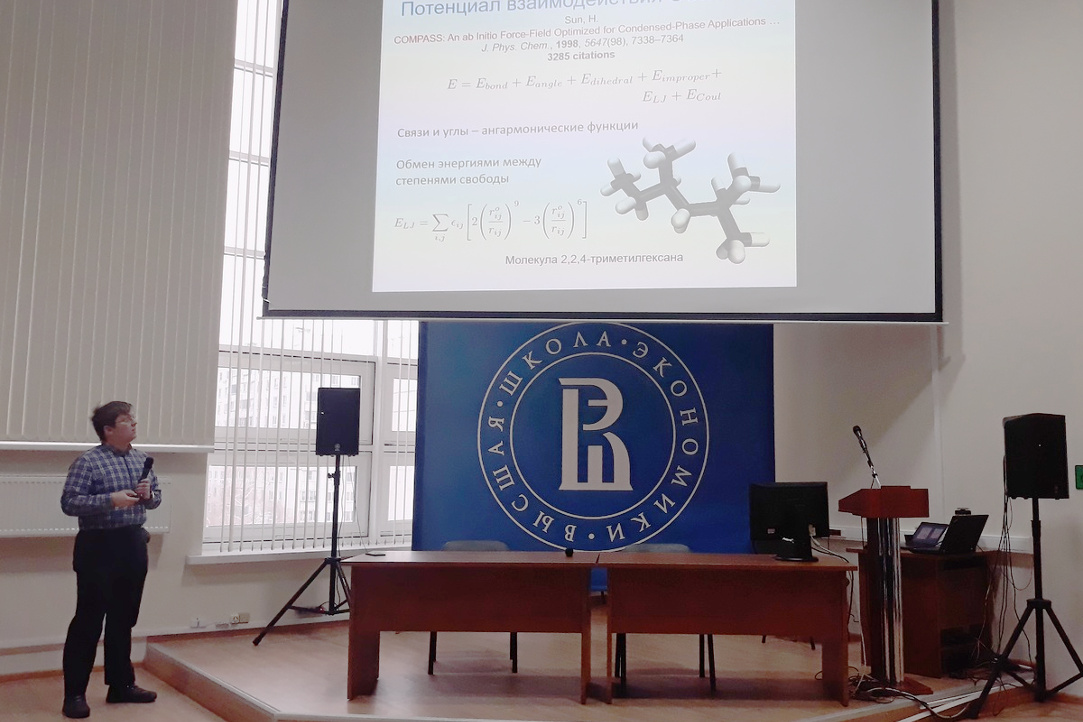Second School-seminar "Supercomputers in scientific research: the horizons of multiscale modeling and effective supercomputer co-design"
As part of the promotion of modern supercomputer technologies for the needs of scientific research, SAMMA laboratory organized the second school-seminar "Supercomputers in scientific research: the horizons of multi-scale modeling and effective supercomputer co-design". This event brings together developers of advanced supercomputer technologies and scientists who use high-performance computing in their research. The first day was devoted to the analysis of new technical solutions for high-performance computing, and the second to applications of supercomputer modeling, molecular dynamics simulations in the real problems of materials science and molecular biology.

The development of new solutions in the field of supercomputers should certainly be carried out taking into account the tasks that are planned to be solved on this high-performance equipment. Laboratory staff SAMMA presented reports on a number of areas of multiscale modeling:
The first talk by Vasily Pisarev was describing the success in the modeling of transport coefficients in hydrocarbons at high pressures using second-generation COMPASS model. The results of the predictions for 2,2,4-threemethylhexane were presented at 10th Industrial Fluid Properties Simulation Challenge. The model was succeeded to predict values for pressures up to 6 thousands bars and won a second prize.
This talk was followed by two student presentation on their projects on modeling of biomembranes. First of them was done by Anna Gavrilina presenting first results on modeling toxic protein viscumin interactions with model membranes. Then Anton Moskvin described the difference between full-atom and united-atom representations applied to the modeling of transmembrane helix of EGFR receptor in model membrane.
The third talk was done by Yuri Trofimov on the water transport in TRPV1 channel. This molecule is essential for our feeling of hot. The channel opens when temperature increases, starting a nerve impulse. The main result of this study was that the channel is transporting water molecules, and there are important amino acid residues taking part in this process.
Another important question is the behavior of the membrane itself. It was addressed in the lecture of Ph.D student Victor Pokrovsky focusing a correlated motions of lipid molecules in the bilayer. The spontaneous formation of such a clusters of molecules may be the first step of the lipid migration and raft formation around proteins in real membranes.
The final lecture was done by research fellow of IBCh RAS and NRU HSE Andrey Kuznetsov who was talking about several fundamental problems in protein-membrane interactions. First, the overview of the cell membrane structure was presented, and then the importance of protein-lipid contacts in the simple case of two transmembrane helices interaction was underlined. Using model peptides and point mutations in native sequences, he show in computational experiment that there are two ways of modulation of protein-protein interaction. First is direct protein-protein contacts, and second is the effect of the environment. Two another examples of the applications of molecular modeling to membrane protein structure prediction and free energy estimation were also shown.
The second day of the school-seminar on supercomputer modeling showed us how these methods open a new horizons in materials sciences and molecular biology using modern and precise models and, of course, high-performance hardware.
Research Fellow
Anna Arbuzova
Student
Москвин Антон Игоревич
Student
Vasily Pisarev
Leading Research Fellow
Victor Pokrovskiy
Research Assistant
Yury Trofimov
Research Assistant
